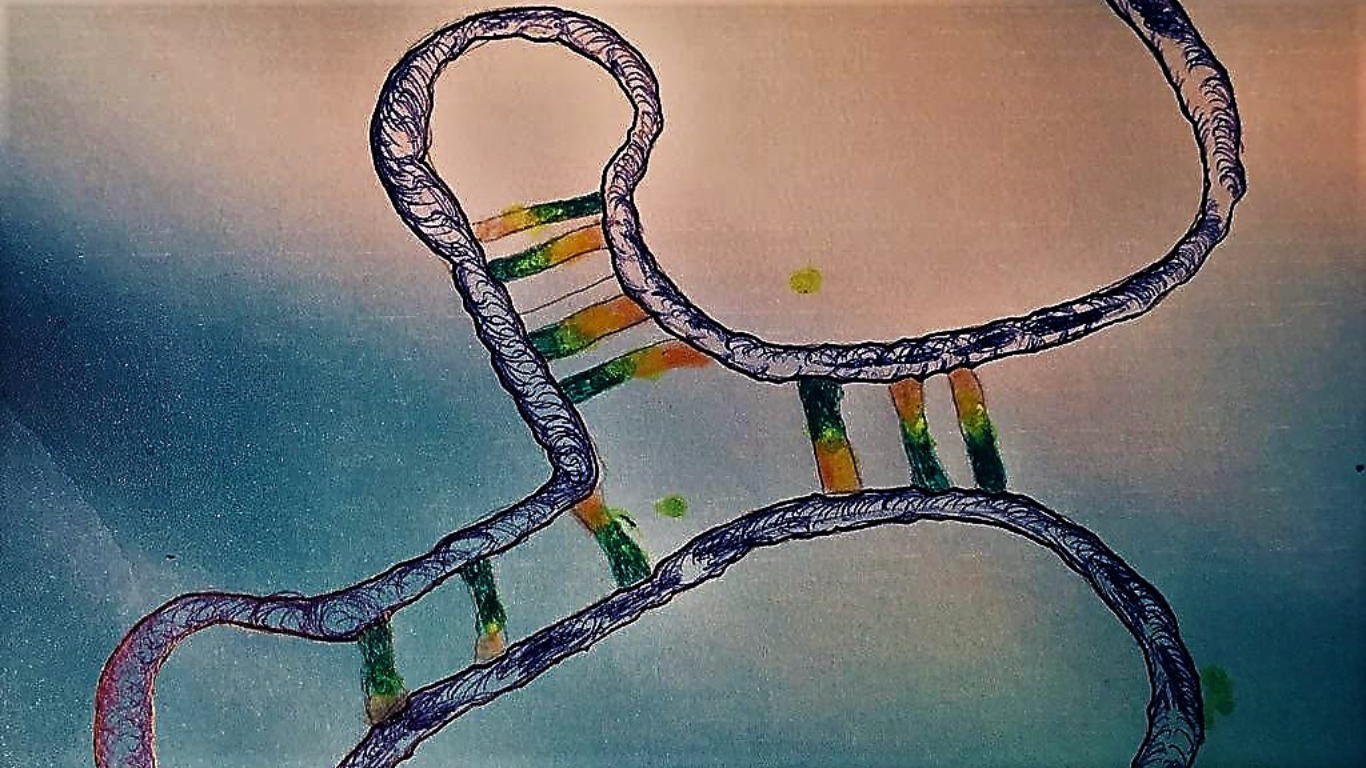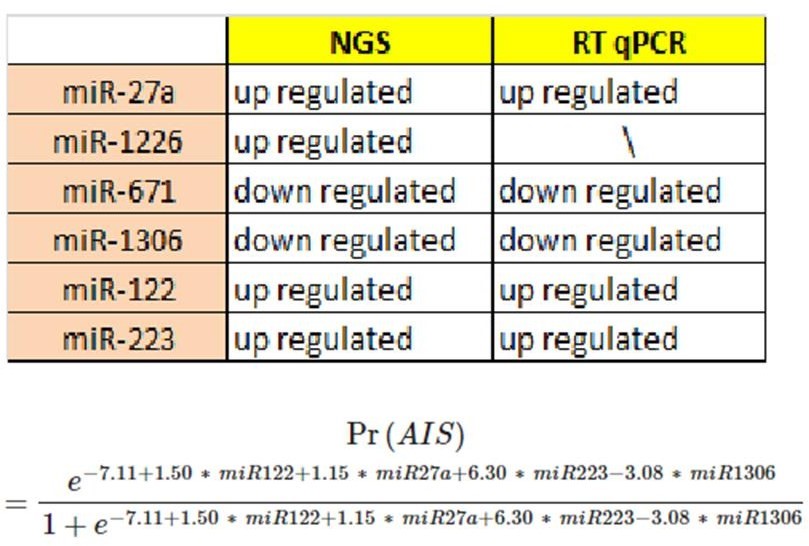Biomarkers for adolescent idiopathic scoliosis

A study realized in 2016 in Valencia proposed a miRNA-signature for molecular adolescent idiopathic scoliosis (AIS) diagnosis and demonstrated evidence for the deregulated miRNAs that participate in the differentiation of bone’s cells[1].
Adolescent idiopathic scoliosis (AIS) is the commonest spinal abnormality in children. A recent epidemiology report has demonstrated a significant AIS burden in the USA and Europe that affects 2-3% of the population under age 18 [2]. The aetiology of AIS is currently unknown but the role of the genetic factors involved in AIS is widely accepted [3]. Recently epigenetic factors and miRNAs, have been proposed as contributors of AIS physiopathology. Epigenetic factors can modulate the normal expression of genes so they can regulate the synthesis of proteins regardless of gene sequence. miRNAs are a large family of short non-coding RNAs which participate in gene regulation through binding capacity to mRNA. miRNAs are very promising biomolecules to be used as biomarkers because they act as signaling molecules and participate in many biological processes [4,5]. They can be used as biomarkers because miRNAs are excreted from the cells to the vessels can be found in blood.
In this study a blood circulating signature of 4-miRNAs is proposed for a molecular-based AIS diagnosis. Moreover it is also shown in which pathways these deregulated miRNAs are involved. Blood samples were withdrawn from both AIS patients and healthy subjects. From the plasma Garcìa-Giménez and collaborators isolated cell-free total RNA(including miRNAs) and they used Next Generation Sequencing (NGS) to identify deregulated miRNA’s identity. Then by RT-qPCR they quantifyed the different expression levels in patients and healthy subjects. From the results of these two methods the authors found the probability of a specific patient having AIS by the signature with the equation shown in figure 1.

miR-671 normally inhibits osteoblast differentiation in BMP pathway, but in patients this miRNA is downregulated, so it does not perform its function. miR-27 is upregulated and has an ambiguous function: in BMP pathway disadvantages the osteoblast differentiation, while in Wnt pathway favors it. MiR-223, which is upregulated in patients, favors the osteoclast differentiation because it inhibits NFIA, an inhibitor of this via. All in all, these results indicate an imbalance in miRNA-mediated signaling during osteoblast/osteoclast differentiation in AIS patients, which thus alters the correct homeostasis of bone destruction and bone formation. However, the effects of these deregulations are unknown: is not clear how this imbalance alters the normal development of the spinal column. For a better comprehension of the physiology of AIS it could be useful to identify all the other targets of these deregulated miRNAs that can play an important role in this pathology. Another aspect that have to be clarify is the level expression of miR-1306 and miR-1226. The ROC curve demonstrate an AUC value ( how the model is accurate ) of 0.95. It’s a high result, but it can reach the value of 1, that is the higher level of accuracy. However it must be excluded the possibility of an extra- exocytosis from the cells to the vessels of these miRNAs, this is important because it can alter the quantities of the effective levels of miRNAs expressed in this pathology and it cannot pay with the real expression levels of these miRNAs in the cells. In conclusion, this is the first step to find a good biomarker for AIS and to understand the role of the miRNAs in the pathways involved in the development of this pathology.
References
- José Luis García-Giménez,Pedro Antonio Rubio-Belmar, Lorena Peiró-Chova, David Hervás, Daymé González-Rodríguez, José Santiago Ibañez-Cabellos, Paloma Bas- Hermida, Salvador Mena-Mollá, Eva María García-López, Federico Pallardó & Teresa Bas, Circulating miRNAs as diagnostic biomarkers for adolescent idiopathic scoliosis. Scientific Reports volume 8, (2018)
- Konieczny, M. R., Senyurt, & Krauspe,
- Epidemiology of adolescent idiopathic scoliosis. Journal of children’s orthopaedics7, 3–9 (2013)
- Cheng, J. C. et al. Adolescent idiopathic scoliosis. Nature reviews. Diseaseprimers 1, 15030, (2015).
- Garcia-Gimenez, L. et al. Epigenetic biomarkers: A new perspective in laboratory diagnostics. Clinica chimica acta; international journal of clinicalchemistry 413, 1576–1582, (2012).
- Sandoval, J., Peiro-Chova, , Pallardo, F.& Garcia-Gimenez, J. L. Epigenetic biomarkers in laboratory diagnostics: emerging approaches and opportunities. Expert review of molecular diagnostics 13, 457–471, (2013).
